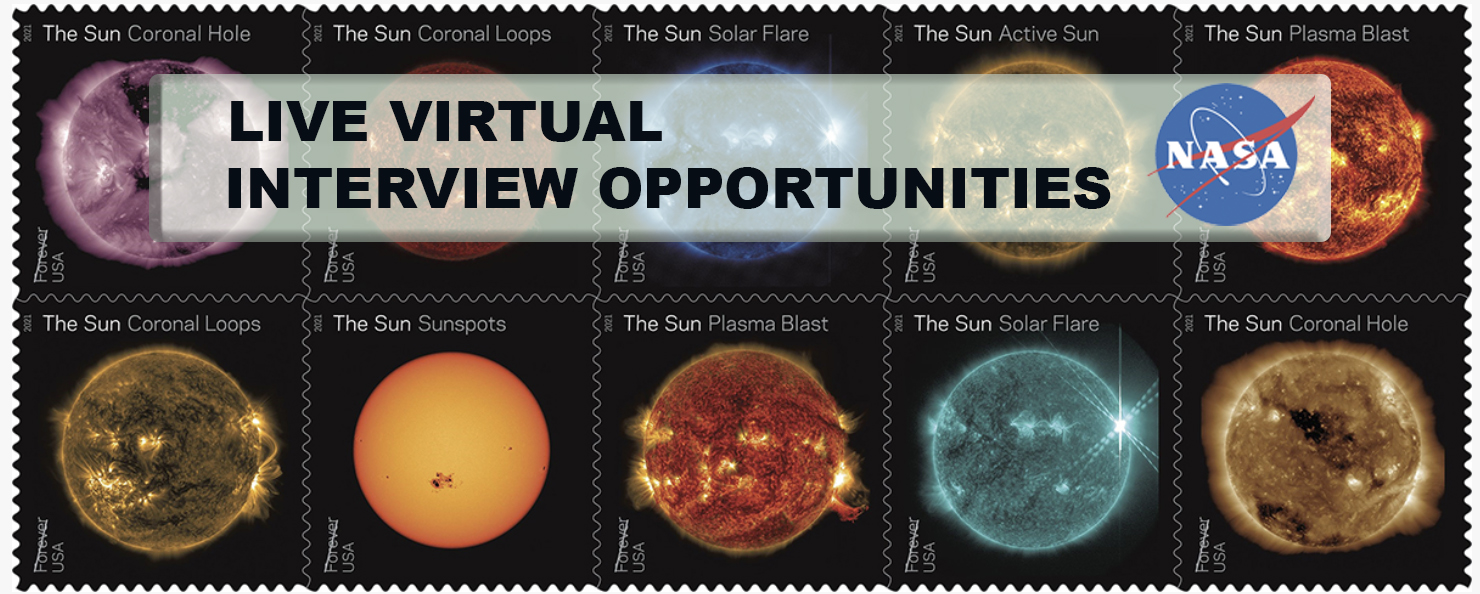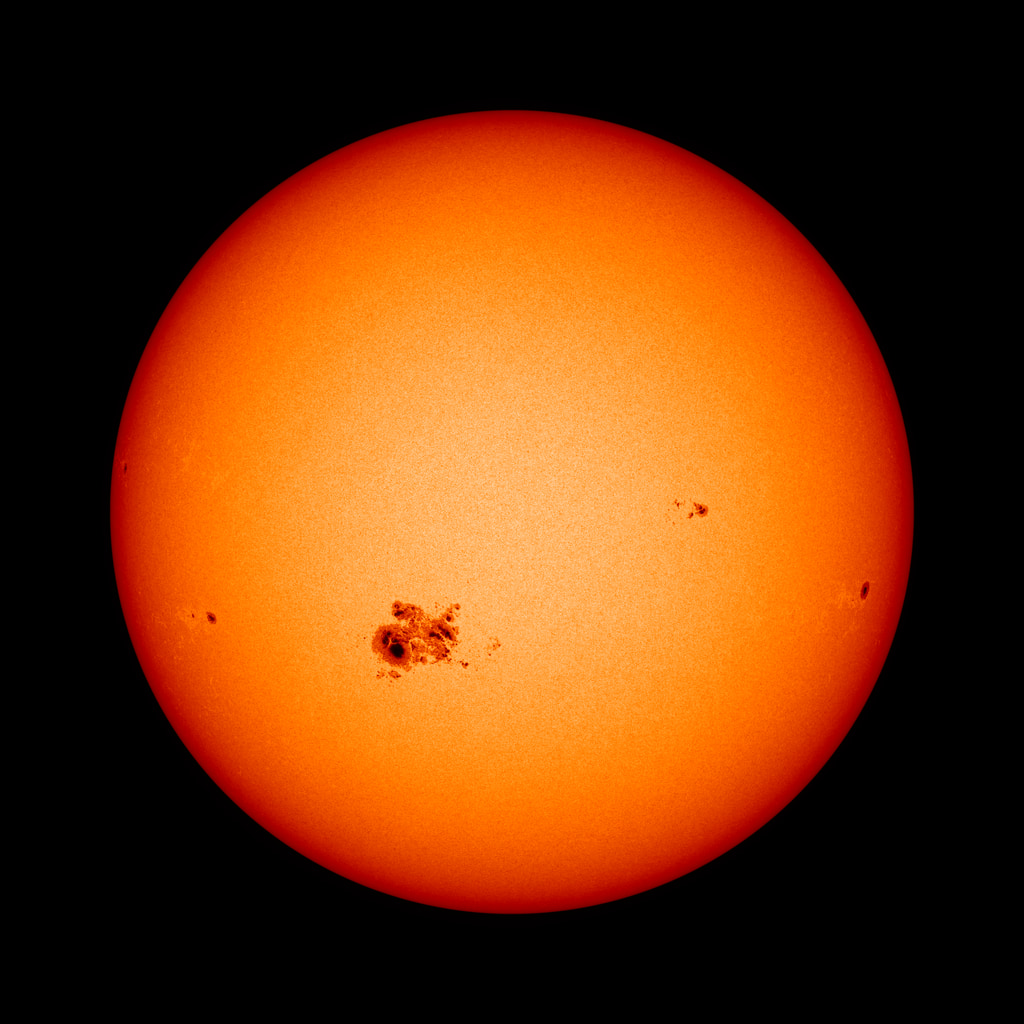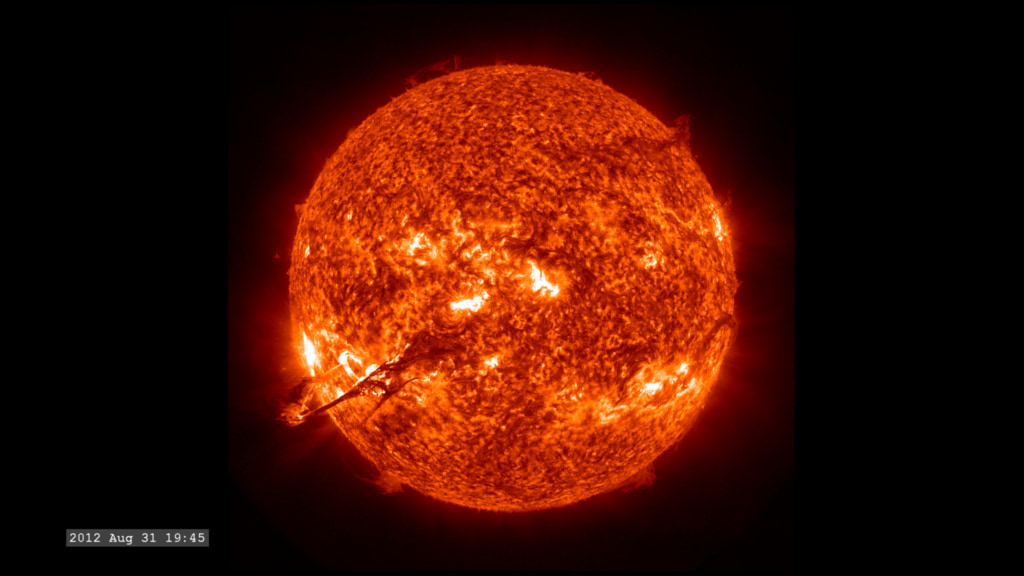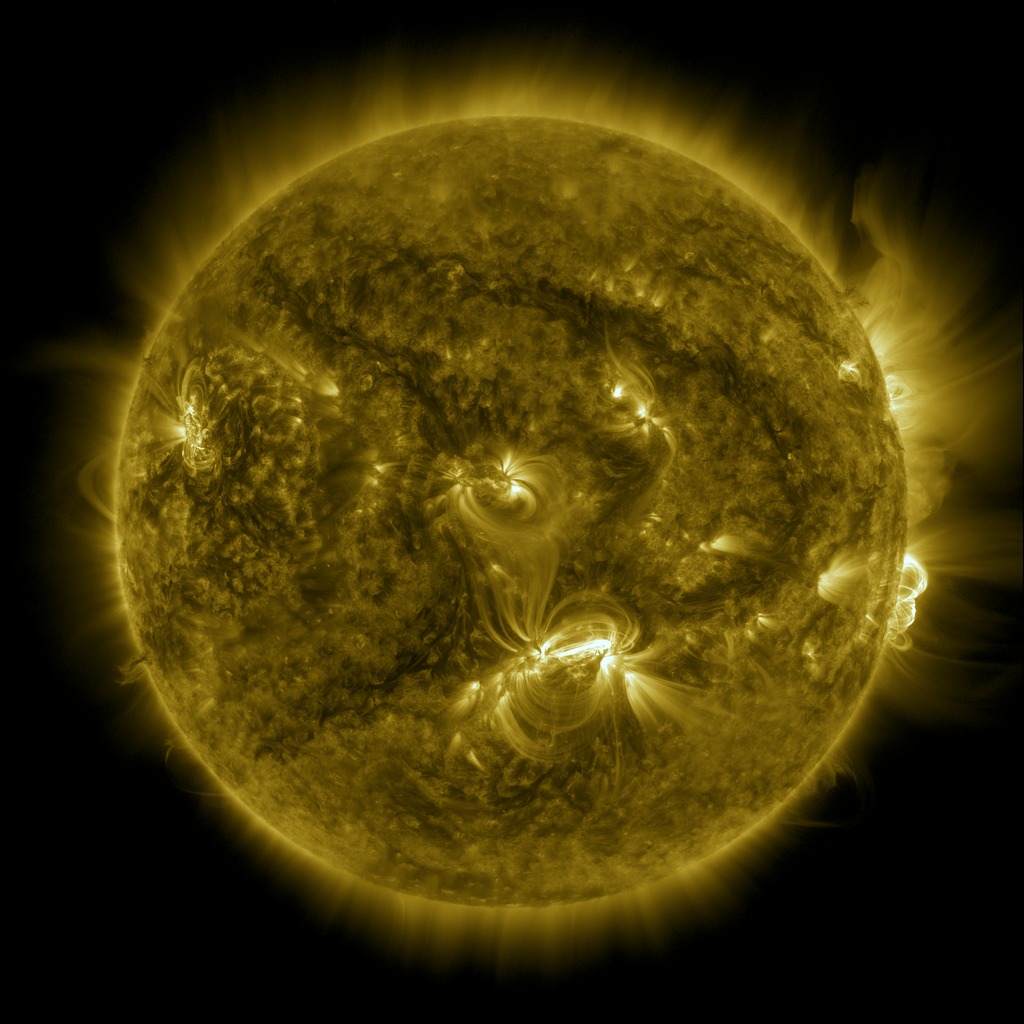Animation of USPS Stamps Featuring NASA's Solar Dynamic Observatory
The U.S. Postal Service illuminates the light and warmth of our nearest star by highlighting these stunning images of the Sun on stamps. These images come from NASA’s Solar Dynamics Observatory, a spacecraft launched in February 2010 to keep a constant watch on the Sun.
The Sun is the only star that humans are able to observe in great detail, making it a vital source of information about the universe. The Solar Dynamics Observatory lets us see the Sun in wavelengths of ultraviolet light that would otherwise be invisible to our eyes. Each black-and-white image is colorized to the bright hues seen here.
The stamps highlight different features on the Sun that help scientists learn about how our star works and how its constantly churning magnetic fields create the solar activity we see. Sunspots, coronal holes and coronal loops, for example, can reveal how those magnetic fields dance through the Sun and its atmosphere. Observing plasma blasts and solar flares can help us better understand and mitigate the impact of such eruptions on technology in space.
The Sun Science stamps are being issued as Forever stamps, which will always be equal in value to the current First-Class Mail 1-ounce price.
Animation with no audio.
Animation with audio.
Music credit: "Key to Sucess" by Laurent Levesque [SACEM] from Universal Production Music

The U.S. Postal Service issued a set of stamps highlighting views of the Sun from NASA’s Solar Dynamics Observatory on June 18, 2021.
Credits: U.S. Postal Service

The U.S. Postal Service issued a set of stamps highlighting views of the Sun from NASA’s Solar Dynamics Observatory on June 18, 2021.
Credits: U.S. Postal Service

Coronal Hole
The dark area capping the northern polar region of the Sun is a coronal hole, a magnetically open area on the Sun from which high-speed solar wind escapes into space. Such high-speed solar wind streams can spark magnificent auroral displays on Earth when they collide with our planet’s magnetic field. These images were captured May 17-19, 2016, and the image on the stamp is from May 17. The images show the Sun in 211 Angstrom light, a wavelength of extreme ultraviolet light. This type of light is invisible to our eyes and is absorbed by Earth’s atmosphere, so it can only be seen by instruments in space.
Credit: NASA/SDO

Coronal Loops
Visible on the lower right of the Sun is a prominence, with its bright arcs traced out by charged particles spiraling along the Sun’s magnetic field lines. Coronal loops are often found over sunspots and active regions, which are areas of intense and complex magnetic fields on the Sun. These images were captured on June 18, 2015, in light at 304 Angstroms, an extreme ultraviolet wavelength.
Credit: NASA/SDO

Solar Flare
The bright flash on the Sun’s upper right is a powerful X-class solar flare. X-class flares are the most powerful type of solar flare, and these bursts of light and energy can disturb the part of Earth’s atmosphere where GPS and radio signals travel. These images were captured on Aug. 9, 2011, in extreme ultraviolet wavelength 335 Angstroms.
Credit: NASA/SDO

Active Sun
This view highlights the many active regions dotting the Sun’s surface. Active regions are areas of intense and complex magnetic fields on the Sun – linked to sunspots – that are prone to erupting with solar flares or explosions of material called coronal mass ejections. This image was captured on Oct. 8, 2014, in extreme ultraviolet wavelength 171 Angstroms.
Credit: NASA/SDO

Plasma Blast
These images show a burst of material from the Sun, called a coronal mass ejection. These eruptions of magnetized solar material can create space weather effects on Earth when they collide with our planet’s magnetosphere, or magnetic environment – including aurora, satellite disruptions, and, when extreme, even power outages. These images are a blend of extreme ultraviolet wavelengths 171 and 304 Angstroms, captured on Aug. 31, 2012.
Credit: NASA/SDO

Coronal Loops
These images show evolving coronal loops across the limb and disk of the Sun. Just days after these images were taken, the Sun unleashed a powerful X-class solar flare. These images were captured in extreme ultraviolet wavelength 171 Angstroms from July 8-10, 2012, and the image on the stamp is from July 9.
Credit: NASA/SDO

Sunspots
This view in visible light – the type of light we can see – shows a cluster of sunspots near the center of the Sun. Sunspots appear dark because they are relatively cool compared to surrounding material, a consequence of the way their extremely dense magnetic field prevents heated material from rising to the solar surface. These images were captured Oct. 20-26, 2014, and the frame on the stamp is from Oct. 23.
Credit: NASA/SDO

Plasma Blast
These images show a burst of plasma from the lower right of the Sun, which happened in conjunction with a mid-level solar flare. These images are a blend of extreme ultraviolet wavelengths 171 and 304 Angstroms from Oct. 2, 2014.
Credit: NASA/SDO

Solar Flare
These images show another view of the Aug. 9, 2011, X-class solar flare featured in the blue-toned 335 Angstrom images. These images were captured in light at 131 Angstroms, an extreme ultraviolet wavelength.
Credit: NASA/SDO

Coronal Hole
These images show a pair of coronal holes, one near the Sun’s equator and one at the Sun’s South Pole. These images were captured in extreme ultraviolet wavelength 193 Angstroms from Jan. 9-12, 2011, and the frame on the stamp is from Jan. 10.
Credit: NASA/SDO
Credits
Please give credit for this item to:
NASA's Goddard Space Flight Center
-
Animator
- Krystofer Kim (KBR Wyle Services, LLC)
-
Producer
- Joy Ng (KBR Wyle Services, LLC)
-
Writer
- Sarah Frazier (SGT)
-
Data visualizer
- Tom Bridgman (Global Science and Technology, Inc.)
Release date
This page was originally published on Thursday, June 17, 2021.
This page was last updated on Wednesday, May 3, 2023 at 1:44 PM EDT.
![Music credits: “Swirling Blizzard” and “Endless Swirl” by Laurent Dury [SACEM] from Universal Production Music Watch this video on the NASA Goddard YouTube channel.Complete transcript available.](/vis/a010000/a013800/a013859/13859_SDOColors.00700_print.jpg)



